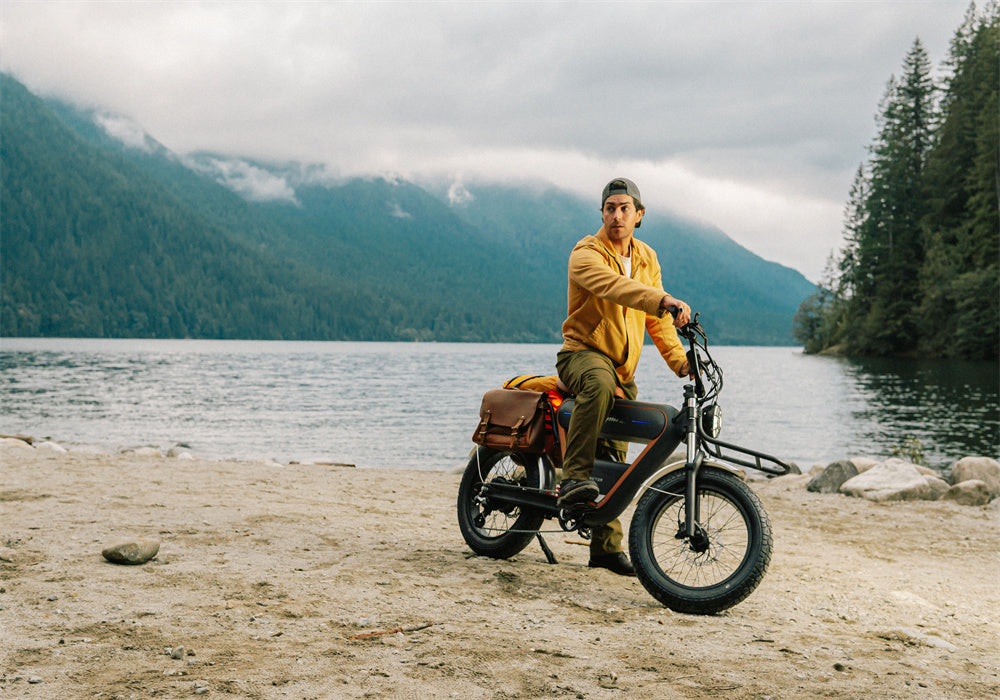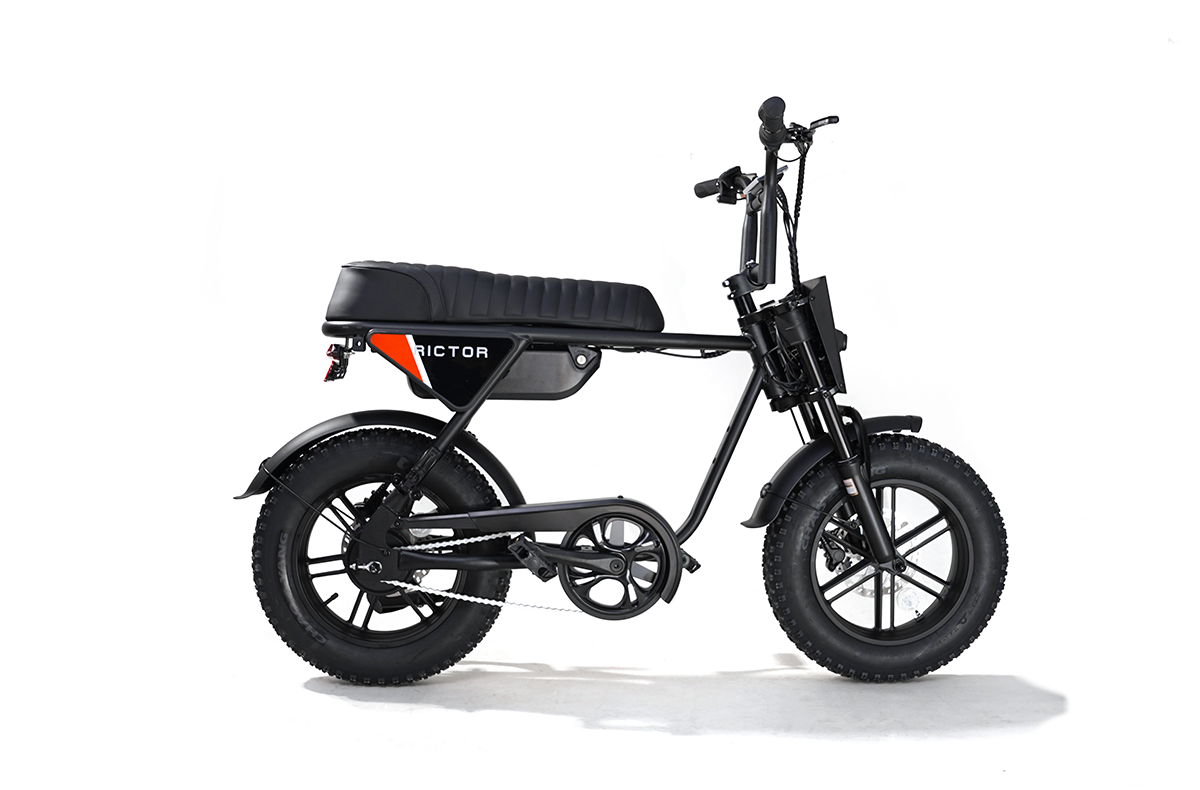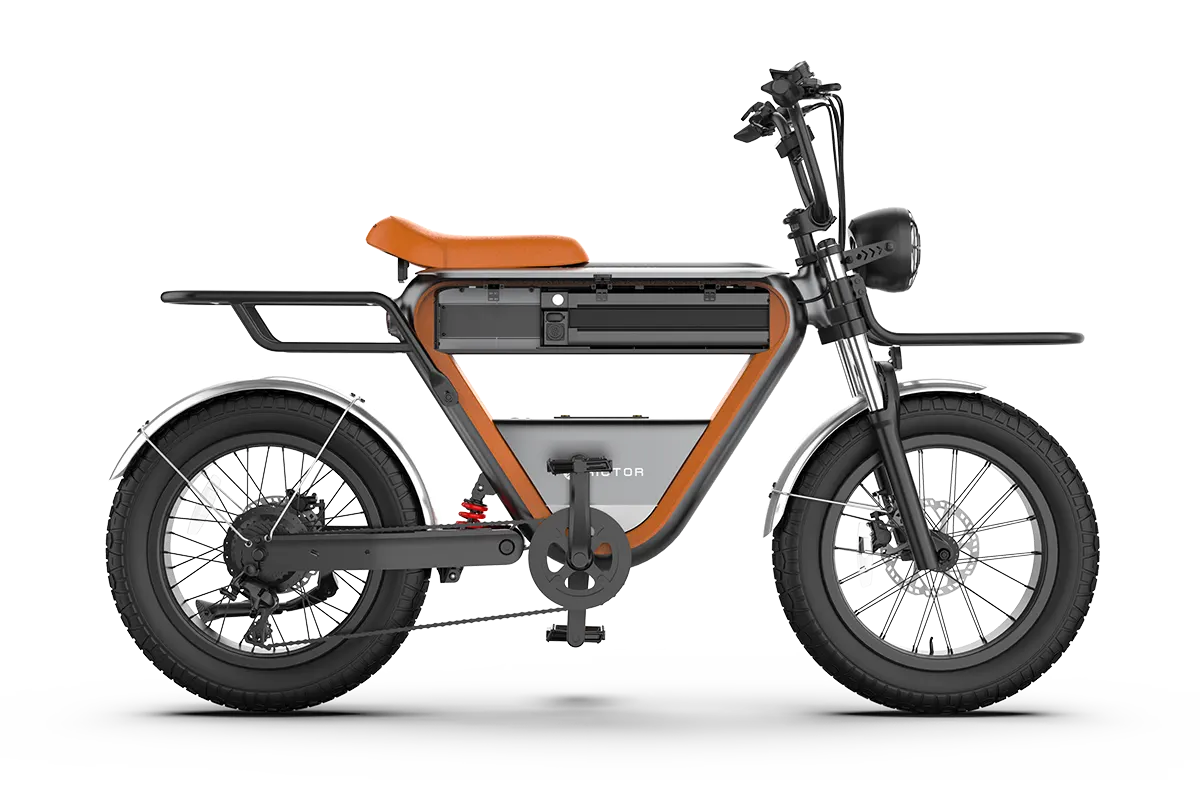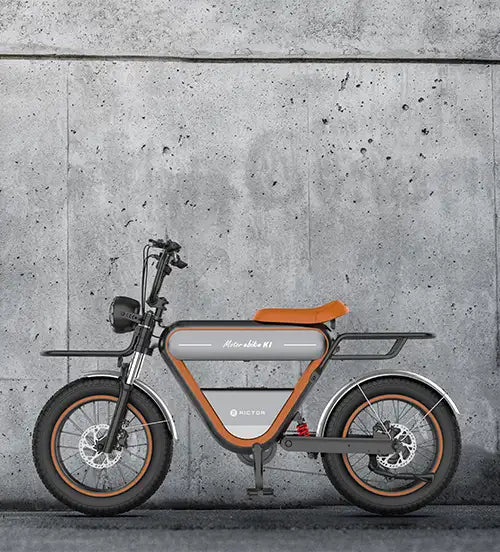
What is a Fat Bike? Everything You Need to Know
Fat bikes are built for adventure. With their oversized tires, they are made to tackle terrains that regular bikes can’t handle — think snow, sand, or rough trails.
how they work, who they’re for, and why they might just be the bike you didn’t know you needed.
What is a Fat Bike
A fat bike is a bicycle designed with wide tires (ranging from 3.8 inches to 5 inches and sometimes even wider), allowing it to ride on soft or uneven surfaces like snow, sand, and mud.
These tires provide more surface area, giving the bike better traction and stability compared to traditional mountain bikes.
Why does that matter? The extra width and lower tire pressure (around 5 to 15 PSI) allow the bike to "float" over the ground rather than sink in. This makes fat bikes perfect for off-road cycling in places where regular bikes struggle to gain traction.
Fat bikes are built for control and comfort on rough terrain. The oversized tires absorb shocks from uneven surfaces, and their larger footprint makes them ideal for riding in conditions like:
-
Soft sand
-
Deep snow
-
Mud
-
Loose gravel
If you're the kind of rider who wants to go beyond paved roads, a fat bike opens up an entire world of possibilities. Whether you’re crossing a snowy trail or biking along a beach, fat bikes let you explore areas where other bikes would get stuck.
SEE ALSO Rictor K1 All-Terrain Electric Bike: Is it the Ultimate Off-Road Champion of 2024?
Fat Bike Structure
The key to a fat bike’s performance lies in its unique structure, specifically its tires, frame, and components.
Tires
The wide tires of a fat bike are usually between 3.8 to 5 inches, with some models even reaching up to 5.5 inches.
These wide tires provide more traction and stability, especially when riding on soft or loose surfaces.
Think of them like a snowshoe — they help distribute your weight over a larger area, preventing the bike from sinking into the snow or sand.
Fat bike tires also have a low air pressure that helps with shock absorption. This means a more comfortable ride over rough terrain since the tires act as a natural suspension system.
Frame
To support the wide tires, fat bike frames are built with more clearance and are usually made of strong materials like steel or aluminum. Steel frames are heavy but extremely durable, making them perfect for tough trails. Aluminum frames are lighter and offer a good balance between strength and weight.
The frame geometry of fat bikes is designed for stability and control, with a slightly slacker angle to give the bike more balance on uneven surfaces.
Electric Fat Bike
If you’re thinking about fat biking but worried about the extra effort required to pedal on soft surfaces, an electric fat bike might be the solution. These bikes are equipped with electric motors that provide pedal-assist, making it easier to tackle steep hills, long rides, and rough trails.
Why Choose an Electric Fat Bike?
-
Pedal Assist: The motor kicks in when you need a boost, so you can tackle tougher climbs without wearing yourself out.
-
Longer Rides: The added assistance allows you to cover more ground without feeling as fatigued. Electric fat bikes also often have a longer battery life, meaning you can ride longer without having to recharge.
-
Effortless Riding: The motor helps make challenging terrains, like sand and snow, a lot more manageable, allowing you to enjoy the ride rather than struggle through it.
With the addition of an electric motor, fat bikes become even more versatile, offering the best of both worlds — the power of a traditional fat bike combined with modern electric technology.
Fat Bike Riding Experience and Benefits
One of the biggest draws of fat bikes is the riding experience. If you’re used to traditional mountain bikes, you’ll quickly notice the difference when you hop on a fat bike.
Comfort and Control
Fat tires provide a smooth ride over rugged terrain. Whether you’re cruising over loose sand, soft snow, or bumpy trails, the tires absorb shocks and smooth out the ride. The wider tires act as natural suspension, keeping your body from taking the brunt of the impact.
Traction in Tough Conditions
Fat bikes excel when it comes to traction. Their wider tires create a larger contact patch with the ground, providing superior grip, even in wet or loose conditions.
Fat bikes are ideal for adventurers who want to explore untouched trails, whether it’s in the snow-covered mountains, along a beach, or through a rugged forest path.
A Ride for All Terrain
Fat bikes aren’t just for the hardcore off-roading crowd. They’re super stable and comfortable, even on bumpy city streets. The wide tires and low pressure make them perfect for handling rocky paths, trails, and those annoying potholes you find in urban areas. The Rictor K1 all terrain electric bike is a great option for anyone looking to take it up a notch. With its Bafang 750w motor assist, tackling tough city roads and steep hills becomes a breeze. Whether you’re cruising around town or heading off the beaten path, the Rictor K1 ensures a smooth, powerful ride every time.
Who’s the Ideal Rider for a Fat Bike
Fat bikes aren’t for everyone, but they are perfect for certain types of riders. If you enjoy off-road biking and want to push your limits, a fat bike is the way to go.
Ideal for:
-
Outdoor Adventurers: If you love to explore new places — from snow-covered trails to sandy beaches — a fat bike can handle it all.
-
Cyclists Who Ride Rough Terrain: If you want a bike that can go beyond smooth pavement and handle gravel, mud, or sand, fat bikes are perfect for you.
-
Casual Riders: Even if you're just looking for a comfortable ride on uneven roads, fat bikes offer stability and comfort that standard bikes can't match.
Are Fat Bikes Hard to Pedal
One of the most common misconceptions about fat bikes is that their wide tires make them harder to pedal. It’s true that fat bikes are built for different types of terrain, but that doesn’t necessarily mean they’re harder to ride than traditional mountain bikes.
Fat bikes have more rolling resistance than regular bikes, but this is because their tires are designed to perform in soft conditions. On solid ground like pavement, they can feel slower than standard bikes, but on snow or sand, they provide much more stability.
The pedal-assist feature on many electric fat bikes helps riders easily tackle tough inclines or long distances without getting exhausted. If you’re finding it tough to pedal, an electric fat bike can make the ride much easier, especially when dealing with steep hills or loose terrain.
What is the Weight Limit for a Fat Bike
Fat bikes are designed to handle heavier loads than traditional bikes. Depending on the materials used for the frame and the type of components, fat bikes typically have a weight limit between 250 lbs and 350 lbs.
-
Frame Material: Steel frames tend to support more weight than aluminum or carbon, but they’re heavier. Carbon fiber frames, while lighter, might have a lower weight limit.
-
Tire Support: The wider tires offer more support and stability, but they also need to be paired with a frame that can handle the extra pressure.
Before purchasing a fat bike, check the manufacturer’s specifications for the exact weight limit to ensure it’s the right choice for you.
Can You Ride a Fat Bike on the Road
The wide tires provide comfort and stability on uneven surfaces, and while they may cause a slight decrease in speed on flat roads due to increased rolling resistance, many riders appreciate the smoother ride, especially on rough city streets.
For those who prefer a faster, more road-friendly ride, you might want to opt for a fat tire electric bike. The added motorized assistance allows you to maintain a faster speed without putting too much effort into pedaling, making them a great choice for both urban commutes and off-road adventures.
Are Fat Tire Bikes Bad on Pavement
Fat tire bikes aren’t necessarily bad on pavement, but they do perform differently than traditional road bikes.
On smooth roads, the wide tires can cause additional rolling resistance, which might make the bike feel slower. That said, they still provide great stability and comfort on uneven pavement.
If you're someone who rides in a variety of terrains and values comfort over speed, fat tire bikes are a fantastic option.
Conclusion
Fat bikes are incredibly versatile, providing an excellent ride in a variety of conditions. Whether you're tackling snow, sand, or simply exploring rugged landscapes, fat bikes offer unparalleled stability, comfort, and control. When paired with an electric motor, these bikes become even more efficient, allowing riders to tackle challenging terrains with ease.
FAQs
Are fat bikes difficult to pedal?
Fat bikes can feel more challenging to pedal on hard surfaces due to their wide tires, but they excel in soft terrains. The pedal-assist feature on electric fat bikes makes it much easier to pedal, especially on steep inclines or rough surfaces.
Can I ride a fat bike on regular roads?
Yes, fat bikes can be ridden on roads, though they may not be as fast as standard road bikes. The wide tires offer excellent stability and comfort, especially on uneven roads.
What’s the weight limit for fat bikes?
Fat bikes typically support riders weighing 250-350 lbs, depending on the frame material. Higher models may support more weight, so it’s important to check the specifications before purchasing.




